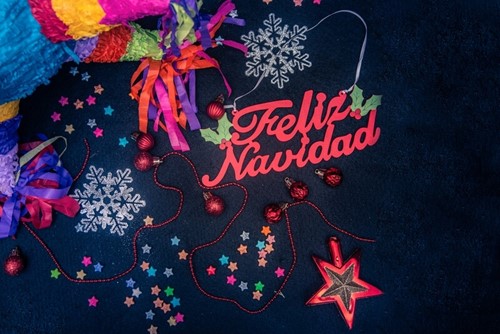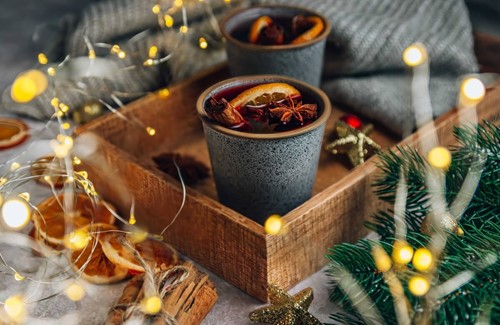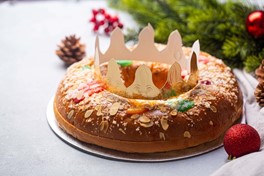

In Mexico, we are very passionate about our traditions. Although during the Christmas season we do some things that are also done in other countries (like waiting for Santa Claus, putting up the Christmas tree and hanging Christmas boots on the wall), we have some unique traditions in the world. Most of them are religious in nature, but with that spark that characterizes us Mexicans so much.
What are the main Christmas traditions in Mexico?
Here we tell you about them so you can celebrate Christmas like an authentic Mexican.

Go to Christmas Posadas
We start this list with the Christmas posadas, probably the central tradition of the Christmas season in Mexico.
The posadas are parties that take place from December 16 to 24, to remember the 9-day pilgrimage that Mary and Joseph made to find a place to sleep in Bethlehem, before the birth of Jesus. Several customs take place during this celebration; the most important is "pedir posada" (ask for shelter), which is a recreation of the pilgrimage.
To recreate it, the guests are divided into two groups. One stays inside the house, representing the owners of that dwelling. The other group leaves the house, representing Mary and Joseph.
The act of "pedir posada" is done by singing a song that we call "letanía para pedir posada" (litany to ask for shelter) in which each group sings its part: those on the outside asking to be allowed to spend the night in the house, and those on the inside questioning who they are. It's like a little musical play.
At the end of the singing, the owners of the house (the group inside) let the pilgrims (the group outside) in, and everyone has a nice time together.
"Pedir posada" is just one of the activities in the Christmas posadas. We also break piñatas, eat tamales and drink the traditional Christmas punch, which is prepared with seasonal fruits.
Nowadays, Christmas posadas are more focused on simply getting together with friends or family to eat, drink Christmas punch and have a fun time together. It is the best excuse to have a little pre-Christmas party.
Drink Christmas Punch
Christmas punch is prepared throughout December. It is the main drink of the Christmas posadas, but it's also served on Christmas Eve, Christmas Day, and practically any day of the holiday season. It's a hot beverage, so it's perfect for winter.

Christmas punch is prepared with seasonal fruits such as tejocote, guava and plum. Some people also add apples or any other fruit they like. It is sweetened with sugar cane and piloncillo.
It's a drink served without alcohol, but it is common for adults to add a little liquor. The spirit that goes best with Christmas punch is rum, but everyone can add the one of their preference.
Break 7-Spike Piñatas
In Mexico, we love piñatas, which are present in almost every celebration (especially in children's birthdays). So, of course, at Christmas, they are a must.
While the rest of the year we break piñatas of any figure or character (whether fictional or real), the piñatas that we break at Christmas time are particularly those of 7 spikes; these represent the 7 deadly sins.
7-spike piñatas are a tradition mainly in the Christmas posadas, but they can also be present on December 24 as part of the activities before or after Christmas dinner.
To make breaking the piñata more fun, the person in turn who hits the piñata must be blindfolded.
Putting a "Nacimiento" at Home
The nativity scene ("nacimiento") is another element that cannot be missing in almost any Mexican home. It is part of the traditional Christmas decoration in Mexico.
Nativity scenes are representations of the scene in the manger, when the baby Jesus was born. They are put up from the beginning of the posadas and are taken down along with the rest of the Christmas decorations.
The scene is recreated with figures of Mary, Joseph, the Magi, shepherds and field animals. The figure of the baby Jesus is placed until December 24 at night, after he was born.
Nativity scenes are not only placed in homes but also many restaurants, hotels and schools put up theirs as part of the Christmas celebration. Walking through traditional neighborhoods like Coyoacán to see nativity scenes is a common custom of the season. Some houses put spectacular nativity scenes in their entrances or garages, with rivers, lights and a whole production that takes them days to assemble. They do this with pride so that people who pass by will stay a while to admire them.
Watch a Pastorela
In Mexico, we love reenactments, so in addition to posadas and nativity scenes, we have pastorelas.
Pastorelas are small Christmas plays that recreate the shepherds' journey to Bethlehem to see the baby Jesus. On the way, they are confronted by the devil, who does everything possible to prevent them from visiting Jesus. In the end, the Archangel Michael triumphs over evil and the shepherds reach Bethlehem.
A very peculiar characteristic of pastorelas is that they are not serious plays; on the contrary, they tend to be comical and with a lot of satire. When they are performed for an exclusively adult audience, they usually include political and spicy humor.
Prepare Christmas Food
Of course, as in every Mexican celebration and tradition, food is a must.
Mexican gastronomy is vast and varied. Some dishes are only prepared during this season, such as apple salad (with raisins, pineapple, walnuts and sour cream), Christmas Eve salad (with beets, jicama, peanuts and orange juice), and romeritos (quelites dipped in mole and accompanied by shrimp and potato). There's also bacalao a la vizcaína, which is not exclusive to Christmas but is traditional during the season. The main dish is turkey (stuffed or not) and pork leg, which can be prepared larded or marinated.
More dishes can be added to this feast, such as spaghetti, green salad, mashed potatoes and tamales.
To close with something sweet, buñuelos are the most traditional option. Buñuelos are fried wheat flour fritters sprinkled with sugar or bathed in piloncillo honey.
Cut the Rosca de Reyes
Finally, we have the delicious Rosca de Reyes. Although it's not eaten at Christmas, but until January to celebrate Three Kings Day, it is still part of the Christmas celebrations.
Several countries have versions of Rosca de Reyes, but in Mexico, it is an oval bread decorated with crystallized fruits and colored ates. Traditionally, it is eaten on January 6, when we celebrate the arrival of the Wise Men, Melchior, Gaspar and Baltazar to meet the baby Jesus, but in Mexico, we love Rosca de Reyes, so we start eating it since December.
To eat it, we get together with family and friends, and there is a fun element to sharing the Rosca de Reyes: inside the rosca are 1 or more figurines of a child, representing Jesus. Each person must cut their piece of rosca. If there is a figurine in it, then it means that person must invite tamales to everyone on February 2, Candlemas Day, when the purification of the Virgin is celebrated, and the baby Jesus is taken to the church to be blessed.
Very few families actually do the part of blessing the child in the church, but what is done in almost all homes, offices and schools, is to eat tamales on February 2.
And with this, the traditions of the Christmas season in Mexico are officially closed.
Which Christmas tradition is your favorite?
At Central Hoteles, we are very proud of our traditions, and we love to celebrate Christmas in a big way. We are waiting for you in our hotels Zócalo Central and Histórico Central to enjoy the Mexican Christmas traditions.
We wish you very happy holidays and best wishes for the new year that is about to begin.
Merry Christmas!